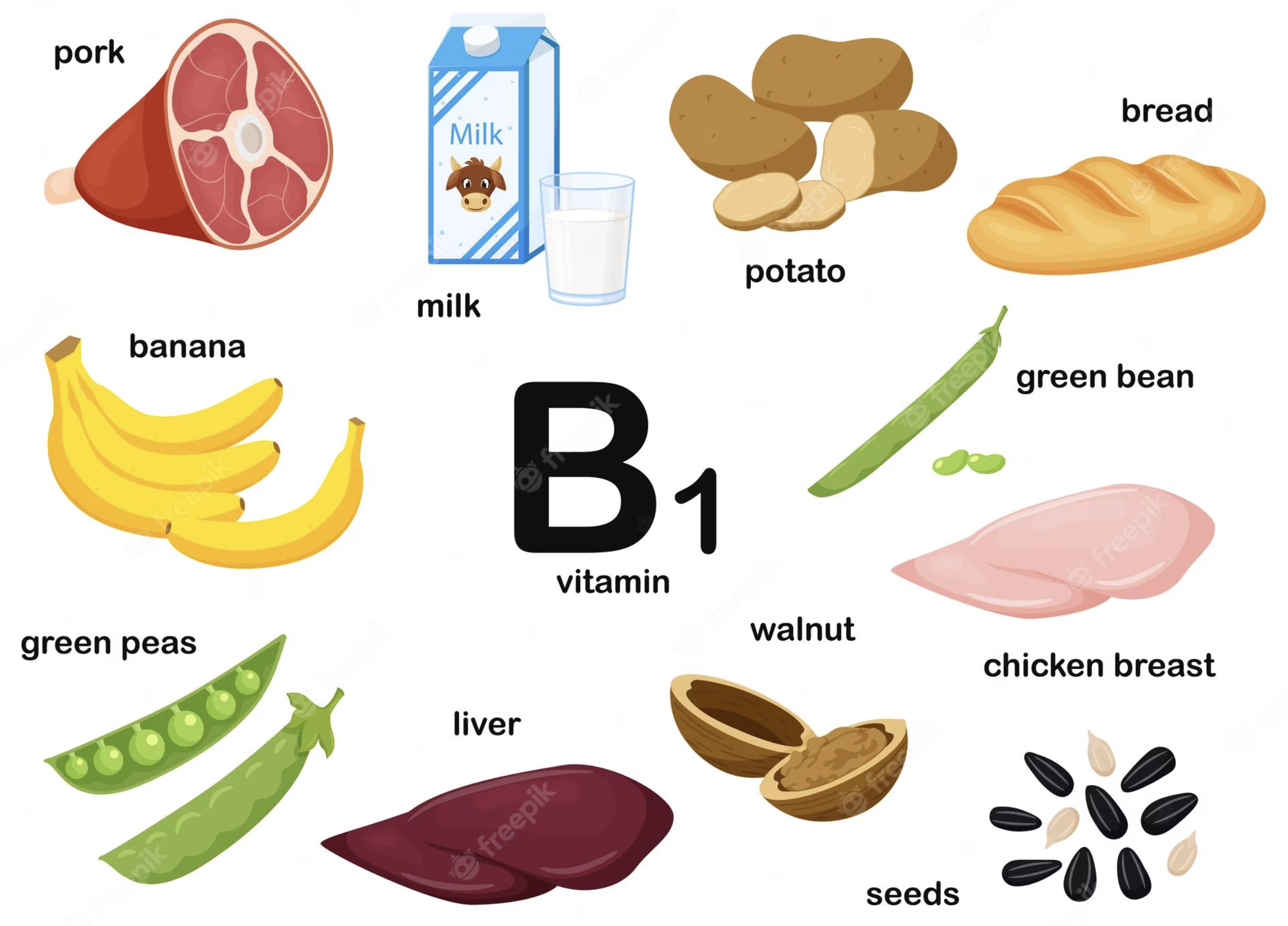 |
Vitamin B1 may offer antioxidative protection through thiamin’s various effects. Photo: Freepik. Click image to enlarge. |
The link between dietary choices and age-related macular degeneration (AMD) is well established, as carotenoid intake plays a significant role in prevention for certain patients. What of vitamins and nutrients? As one new study outlines, vitamin B1 consumption may be linked to late-stage AMD prevalence.
To look for association, the study researchers gathered data from the National Health and Nutrition Examination Survey (NHANES) over two cycles, from 2005 to 2008. Included was a total of 5,107 patients aged 40 or older. They found vitamin B1 levels to be inversely correlated with late AMD prevalence, suggesting the compound may have some protective effects; this was found after taking into account confounding variables.
In their paper for Ophthalmic Research, the authors go into detail about potential reasons for the correlation. AMD development is well-known to be linked with oxidative stress, since the retina requires a high oxygen demand. In the process of converting light into vision, reactive oxygen species (ROS) are produced as metabolic byproducts; when ROS production passes that of the antioxidant systems, oxidative stress occurs.
Increased ROS levels can induce oxidative damage to proteins, lipids and mitochondrial DNA, with mitochondrial injury leading to cell death when releasing certain proteins into the cytoplasm. One of these effects is death of retinal pigment epithelium (RPE) cells, and late AMD (specifically geographic atrophy) is identified through RPE cells loss and subsequent photoreceptor malfunction. Oxidate stress is thus quite important in late AMD development.
Thiamin, or vitamin B1, has increasingly been subject to proof of possessing antioxidant properties, such as with its ability to promote lymphocyte transformation in vivo and boosting neutrophil motility in vivo and in vitro. It can also prevent inactivation of the neutrophil migratory and lymphocyte proliferative responses, thus shielding cells from harmful oxidate products produced by the reaction of peroxidase, H2O2 and halide.
Despite this being positive news, it should be taken into account that the results of this study do not reflect similar previous ones, including those of AREDS and Alienor. These differences may be due to various study models used; this one was cross-sectional, while the other two may have higher levels of proof due to following a multicenter randomized clinical trial and cohort study, respectively. As well, the current study included more factors in adjusted models, like diabetes and hypertension. Both prior studies patients were in their 70s and older on average, while those as young as 40 were included here, potentially pivoting B1 to be more beneficial in a younger population as a prophylactic measure.
In summarizing their findings, the researchers noted that “vitamin B1 serves as an antioxidant, while oxidative stress plays an important role in the development of AMD. By inhibiting the oxidative stress, vitamin B1 plays its vital role in slowing down the development of AMD, especially for late AMD.”
Zheng Q, Shen T, Xu M, et al. Association between dietary consumption of vitamin B1 and advanced age-related macular degeneration: across-sectional observational study in NHANES 2005-2008. Ophthalmic Res. November 3, 2023. [Epub ahead of print]. |

